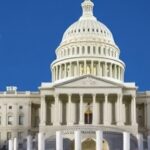After nearly two decades chasing the American Dream in the United States, Rajesh and Priya Patel, a prominent non-resident Indian (NRI) couple from Gujarat, have returned to India, blaming skyrocketing Healthcare costs for shattering their financial stability. The Patels, who built successful careers in Silicon Valley’s tech sector, revealed that a single medical emergency left them with over $250,000 in bills despite having employer-sponsored insurance, forcing them to sell their home and relocate back to Ahmedabad last month.
This poignant story underscores deepening concerns about the affordability of the U.S. healthcare system, even for high-earning immigrants. As immigration patterns shift, the Patels’ departure highlights a troubling trend: skilled NRIs increasingly viewing America as unsustainable amid rising medical expenses that outpace wages.
Patels’ Silicon Valley Success Turns Sour with Medical Crisis
Rajesh Patel, 48, arrived in the United States in 2007 on an H-1B visa, quickly rising to a senior engineering role at a major tech firm in San Jose, California. His wife, Priya, 45, followed soon after, working as a data analyst. Together, they earned a combined household income exceeding $300,000 annually, embodying the classic NRI success narrative.
“We thought we had it all—great jobs, a beautiful home, and plans for our kids’ future,” Rajesh told reporters via video call from India. “But one health scare changed everything.” In 2022, Priya was diagnosed with a rare autoimmune disorder requiring specialized treatment. Despite comprehensive insurance, out-of-pocket costs for deductibles, copays, and experimental therapies ballooned to $250,000 within a year.
The couple’s ordeal mirrors data from the Kaiser Family Foundation, which reports that U.S. family health premiums averaged $23,968 in 2023, up 7% from the previous year. For NRIs on temporary visas, the pressure is intensified by limited access to public programs like Medicaid, leaving them vulnerable to the system’s high costs.
- Key Financial Hits: $50,000 deductible; $100,000 in uncovered therapies; $80,000 in lost wages during recovery.
- They drained $150,000 in savings and took high-interest loans to cover the rest.
- Sold their $1.2 million Bay Area home at a loss to settle debts.
Unaffordable US Healthcare Pushes NRIs Toward Exit Doors
The Patels are not alone in their frustration with Healthcare costs in the United States. A 2023 survey by the National Foundation for American Policy found that 22% of H-1B visa holders cited medical expenses as a factor in considering departure. NRIs, who make up over 70% of H-1B recipients, face unique challenges: employer-tied insurance that vanishes with job loss, and no eligibility for Affordable Care Act subsidies if incomes fluctuate.
“The system is designed for the ultra-wealthy or the subsidized poor—middle-class immigrants like us fall through the cracks,” Priya Patel shared. Her treatment involved multiple hospital stays at facilities like Stanford Health Care, where average daily costs exceed $3,000, according to Healthcare Cost and Utilization Project data.
Broader statistics paint a grim picture:
- U.S. healthcare spending hit $4.5 trillion in 2022, 17.3% of GDP—double the average of other high-income nations.
- Medical debt affects 41% of Americans, per KFF polling, with immigrants overrepresented due to coverage gaps.
- NRI remittances to India surged 12% in 2023 to $125 billion, partly fueled by reverse immigration flows.
Experts like Dr. Meena Singh, an Indian-American health economist at UC Berkeley, note: “For NRIs, the affordability crisis is a tipping point. They’ve endured high taxes and student loans, but healthcare bankruptcy is the final straw.”
Reverse Immigration Wave: NRIs Fleeing America for India
The Patels’ move aligns with a burgeoning reverse immigration trend among NRIs. India’s Ministry of External Affairs reports over 1.5 million Indians returned from abroad between 2020-2023, many citing economic pressures including U.S. Healthcare costs. In tech hubs like Bengaluru and Hyderabad, returning professionals are snapping up jobs at firms like Infosys and TCS, which offer competitive salaries and universal healthcare via India’s Ayushman Bharat scheme.
“Back home, Priya’s ongoing treatment costs us $500 a month—all covered,” Rajesh explained. India’s public-private healthcare model, while imperfect, provides catastrophic coverage for 500 million people, a stark contrast to the U.S. patchwork.
Case studies abound:
- Vikram Rao, another NRI engineer, left Seattle after his child’s cancer treatment racked up $400,000 in bills.
- A LinkedIn group, “NRIs Returning to India,” now boasts 50,000 members sharing stories of U.S. affordability woes.
- Google Trends shows searches for “moving back to India from USA” spiking 40% since 2022.
U.S. immigration authorities note a 15% drop in H-1B renewals from India in 2023, per USCIS data, signaling potential brain drain implications for American innovation.
Voices from the NRI Community Echo Affordability Alarms
Interviews with fellow NRIs reveal a chorus of discontent. “I’ve postponed having kids because maternity costs here are insane—$30,000 for a normal delivery,” said Neha Kapoor, a pharma executive in Boston. Another, Amit Desai from New York, added: “Even with good insurance, surprise bills from out-of-network providers bankrupt families.”
The American Hospital Association defends the system, claiming it drives world-class innovation, but critics like Sen. Bernie Sanders argue for Medicare for All to address healthcare costs. Recent Biden administration caps on insulin at $35/month and out-of-pocket drug costs at $2,000/year offer relief, but fall short for chronic conditions like Priya’s.
In immigrant forums, discussions rage:
| Concern | NRI Sentiment |
|---|---|
| Healthcare Costs | Top reason for 35% considering exit (NRI Pulse Survey) |
| Job Insecurity | Visa dependency amplifies risks |
| Affordability | Housing + medical = 60% of income for many |
Future Outlook: Will More NRIs Abandon US Dreams?
As the Patels settle into their new life—Rajesh now consulting remotely for U.S. clients while Priya advocates for healthcare reform—their story portends shifts in global talent flows. Projections from the Migration Policy Institute suggest up to 500,000 skilled NRIs could return to India by 2027 if healthcare costs remain unchecked, boosting India’s GDP while straining U.S. tech sectors.
India’s government is capitalizing with incentives like the Pravasi Bharatiya Divas portal, streamlining reverse immigration. For the United States, reforms loom: upcoming 2024 elections may spotlight affordability, with proposals for universal coverage gaining traction.
The Patels urge fellow NRIs: “Weigh the costs carefully. America offers opportunities, but at what price to your health and family?” Their relocation, once unthinkable, now inspires thousands contemplating the same path, questioning if the American Dream still justifies the bill.









